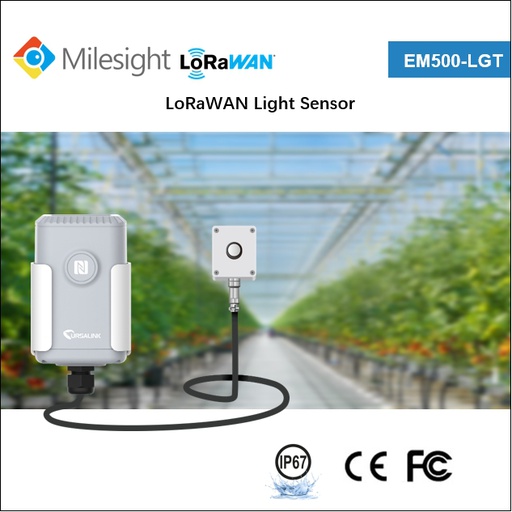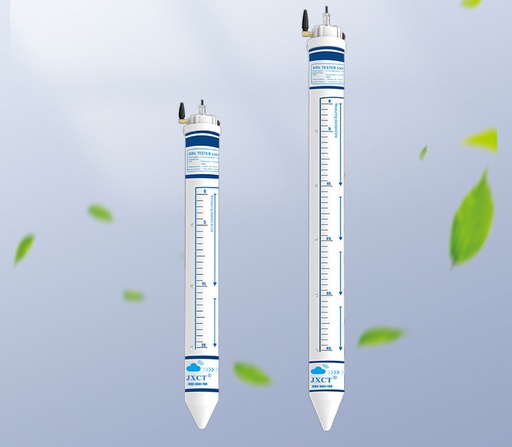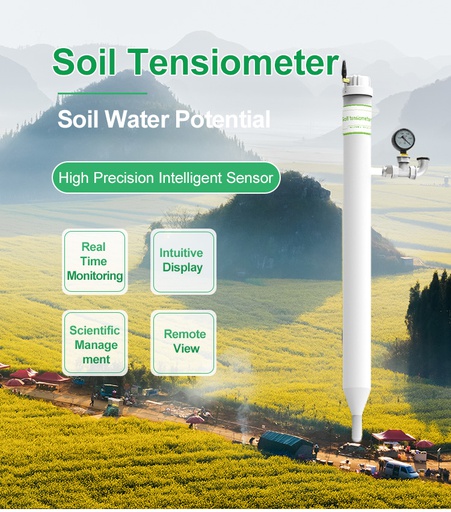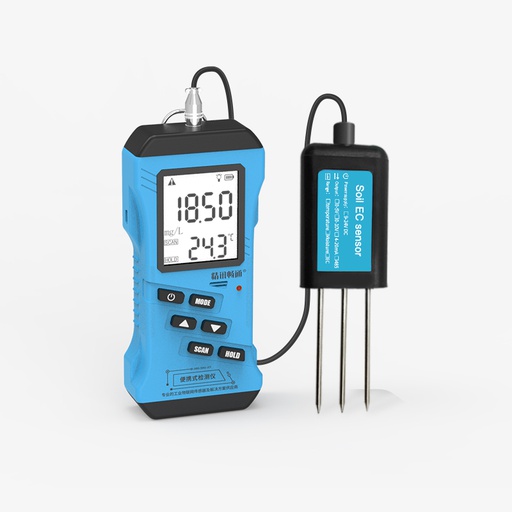Greenhouse Monitoring is a lot easier than you might think, as we have been working with a wide variety of growers to develop an ecosystem of sensors that meets their specific needs. From organic farms to cannabis farms, we’ve assisted our customers in just about every aspect of the farming industry. From big agriculture to small homestead farming, we have a solution available at a price-point the makes sense for everyone. While greenhouse monitoring is a common request, we actually went beyond monitoring to include control for ventilation, humidity, temperature, and light if needed. The best sensors and controllers used by our customers are listed below, and we will share the details on how they may be used.
1. Long Range Wireless Soil Moisture Sensors
It comes as no surprise that soil moisture sensing is at the top on our list. After-all, plants need water to survive and monitoring the soil moisture is a necessary and obvious critical component. Built with a 2-Mile Wireless Range and a 10-Bit resolution, soil moisture monitoring is both accurate and long-lived as the need for monitoring may be as little as sampling a few times per week. Of course other applications may require more frequent monitoring, you can typically expect 5 to 10 years out of a set of batteries depending on settings.
Using our long range wireless soil moisture sensor is as easy as inserting the probe into the soil and placing the transmitter as high as possible to get the best possible transmission range. This soil moisture sensor will indicate the moisture levels of your farm or garden using a value from 0 for dry to 830, which indicates full saturation.
Soil Moisture Sensors are ideally installed in multiple areas for best coverage.
2. Long Range Wireless Temperature Humidity Pressure Air Quality Sensors
This all-in-one sensor is ideal for indoor greenhouse monitoring applications, as it samples Temperature, Pressure, Humidity, and Air Quality. Greenhouse temperature and humidity monitoring is an obvious requirement for some of the growers we work with. Adding pressure and air quality data to your installation can help provide a more complete picture of the environmental conditions within your greenhouse.
Like other sensors, this device will wake up, sample the environmental sensor, send a data transmission up to 2 Miles (Outdoor Line of Sight), and go back to sleep. While rated only for indoor applications at this time (an outdoor version is under consideration), this sensor can provide 2 to 3 years of battery life under normal operating conditions. Like all NCD sensors, the included AA batteries in this device are rated for use in extreme temperatures. Most installations only require a single sensor, which can really help save costs.
3. Long Range Wireless Light Sensors
Greenhouse light level monitoring can also provide a key indicator of plant growth for some applications. This device samples the ambient light levels, sends a wireless transmission up to 2 Miles (line of sight) and then goes back to sleep. This long range wireless light level sensor is capable of reading light levels from 0 to 65K Lux with 16-Bit resolution. While this sensor is ideal for greenhouse monitoring, an outdoor version of this device is sill in consideration (so let us know if you really need a customized sensor for outdoor use). This sensor has an estimated life of 5 to 10 years, supporting up to 500,000 wireless transmissions using just 2 industrial AA batteries. Like the Air Quality sensor, most installations only require a single sensor, which can really help save costs.
How do you Manage All of these Devices Working Together?
The best way to manage all of these devices is to use a localized environment to monitor, control, and push data to the cloud. A loss of internet connection could be devastating for some applications, so we recommend the use of localized logic that’s easy to learn, configure, and change. We prefer to use Node-RED on a localized computer for these applications, as Node-RED has the ability to manage any greenhouse application by simply connecting data flows to logic gates and control objects.
For instance, a flow may be configured for greenhouse monitoring of temperature and activate a heater when the temperature falls too low. Similarly, should the soil become too dry, water may be added for either a time duration or until moisture sensors return to normal readings. We can help you build flows for just about any greenhouse application, but we also have many tutorials for using Node-RED with our products.
How Does a IoT Cloud Platform Fit Into this Installation?
While we do not recommend using IoT cloud platforms for control applications (only due to the potential loss of internet access), we do advise including IoT cloud platforms as part of your Node-RED flow for data analysis, remote notification, and general access to data from anywhere in the world. Sending sensor data to Microsoft Azure can provide a tremendous tool-set for data analysis and monitoring. We also advise customers to learn Losant, as it includes a familiar flow-builder for on-line monitoring (and control) applications. Of course you could also send data to Amazon AWS or your very own MQTT server. With Node-RED, you could leverage the strengths of all cloud platforms simultaneously if you were so inclined.





![[ARCHIVE] Speed Soil Measuring instrument](/web/image/product.template/49686/image_512/%5BARCHIVE%5D%20Speed%20Soil%20Measuring%20instrument?unique=539c3a4)
